Day 6 St. Olav’s, July 21st, 24km, Rombäck > Borgsjö
On our walk from Rombäck to Borgsjo, we walked through fields overflowing with wildflowers. It’s beautiful, and I am surprised to see so many flowers in a place that gets so cold and snowy. We walked along a river for a while until we reached Vikbron, Sweden’s longest wooden bridge. It’s a whopping 131 years old, and I think it looks pretty good considering.
As we walked along the trail, an older woman came out of her house and waved for us to stop. We obliged and stopped to chat. Like most other people we had met, she was curious about who we were and why we had traveled so far just to walk.
She was so kind and generous, insisting that we refill our glasses with the red juice that she brought out. We were grateful to accept the hydrating, sugary liquid.
It was here that we learned that a Swedish mile is actually 10 kilometers. An American mile is 1.6 kilometers. It was this disparity that had tricked us into a false sense of security a couple of times when we heard something was “just a couple miles away.” Aha. Good to know.
We thanked our host and continued on our way but it was a hot, difficult afternoon.
We stopped yet again for a water break, thankful to see the sign beckoning to pilgrims and anyone else needing water. But it felt like every time we stopped for five minutes, it took ten more minutes to get going again. We still hadn’t found our groove on this new trail.

At first, this “Right to Roam” wild camping sounded like a dream. We could camp anywhere! The freedom, the possibilities!
But just because you can camp virtually anywhere doesn’t mean that there will always be a great space for setting up your tent. You need a somewhat flat space, preferably with no rocks or tree roots, and ideally, it will have some level of privacy.
Around mid-afternoon, we started looking for a good camping spot. We didn’t want to get too far off the trail. But it seemed like everything we saw was too overgrown, too close to the road, too rocky, too close to a residence, or fenced-off farmland which we couldn’t access. Well, damn.
Around 5 PM we decided to push on seven more miles to an actual campground. It was high mileage for that late in the day, but since the days are so long in the summer, we weren’t at risk of running out of daylight. Charging on and doubling our distance at that point was a small price to pay for the comforts of a camping spot with amenities like a shower and toilet.
We arrived worn out and hungry. It began to rain on us as we were setting up our tent, but included in our fee was access to a small cabin for cooking. We were able to sit at a table and enjoy a nice warm, dry dinner of ramen noodles with eggs and a cup of hot tea. Then we cleaned up after ourselves and took advantage of the hot showers. I certainly wasn’t averse to skipping a shower or two, but the hot water was a luxury I wasn’t willing to pass up.
Warm and fed, we settled into our sleeping bags. We drifted to sleep as the rain drummed steadily on our tent.
The Very Hard Day
Day 7 St. Olav’s, July 22nd, 28km, Borgsjö > Lake Stor-Harrsjön
The end of our first week of St. Olav’s Way felt like we were finally getting a glimpse of what backpacking in the wilderness is like. Is this where we finally get into it and find our rhythm on this new trail?
We woke up to rain and a slick trail but our goal for the day was a pilgrim’s shelter 28km away. We needed to cover a lot of ground. We packed up, then had a quick, hot breakfast in the cooking cabin before we hit the trail.
On our way, we passed the Borgsjö Kyrka. It is Rococo style and the bell tower was built in a similar style to the stave churches that are unique to this area. After the church, we come to one of many Olafskälla on the trail. These are freshwater springs where legend states that Olav performed a miracle to provide water for his horse.
These springs are protected under Swedish law and anyone found tampering with them will be prosecuted. Having learned this, I felt a little more confident in drinking it without running it through the filter first. It was cool and refreshing and made me feel like I had a deeper connection to the trail.
The last groceries we bought had to last us about 3 days, which was bugging me out mentally. I knew that we had just enough food, but I fixated on not having extra. Even if I wanted to break down and buy some extra food, I physically couldn’t because there were no stores between here and the next resupply.
Luckily, we found a small, quaint cafe that serves great coffee and homemade ginger cookies. We knew we needed to keep moving but the charm of this place and the shopkeeper lured us in. The shop owner shows us pictures of what the place looked like years ago in a black and white picture. It seems it has been in her family for several generations.

I wanted to stay in the cozy cafe with the bottomless coffee and cookies, but the pilgrim shelter was still so far away. So we loaded up our packs and walked on.
Gimme [Pilgrim] Shelter
The path takes us through farmland and into forests. We don’t know exactly where this pilgrim shelter is, just that it is near a large lake on the trail. There is an option to follow the trail on the asphalt or to take the “scenic route” up the mountain and into the forest.
Of course, we chose the latter.
This is the most technical trail we have ever experienced at this point. The ridge is narrow and very steep on both sides. The ground is covered in thick moss, lichen, and undergrowth which hide any holes, loose rocks, or other unstable footings. Each step is in faith, hoping that your feet and ankles find stability and stay underneath you.
All flying insects seem to be feasting on us as we carefully pick our way along the ridge. The giant Scandinavian mosquitoes are biting our scalps through our hats. Large, biting flies land on our shoulders and back, just out of swatting range.
I’m having second thoughts about this mileage goal for the day, around 17 miles. I was unsure if we would make it and unsure if another pilgrim had already claimed the shelter. How long would we have to keep going?
We pressed on and finally, around 9 PM, Andy announced “Here it is!” as he spotted the shelter in the woods by the lake, just off the path. Until he spotted it, I doubted its existence. I almost cried with relief.
The shelter was made of logs and chinked with moss; a roof, floor, and door. It was tidy and comfortable, free from the biting insects we battled all day. It’s luxurious, and it’s ours for the night. We won the prize.
I hurried to set up our sleeping gear while Andy cooked dinner. It was already so late in the day, despite the deceiving amount of sunlight still in the sky. We ate our dinner, enjoying the last light of day reflecting on the lake.
We did it. We pushed through the terrain, the exhaustion and the swarms of biting insects. And we were rewarded with a great shelter, this sunset over the lake, and the satisfaction of knowing that we could do this.
We had survived our first week in the Scandinavian wilderness.
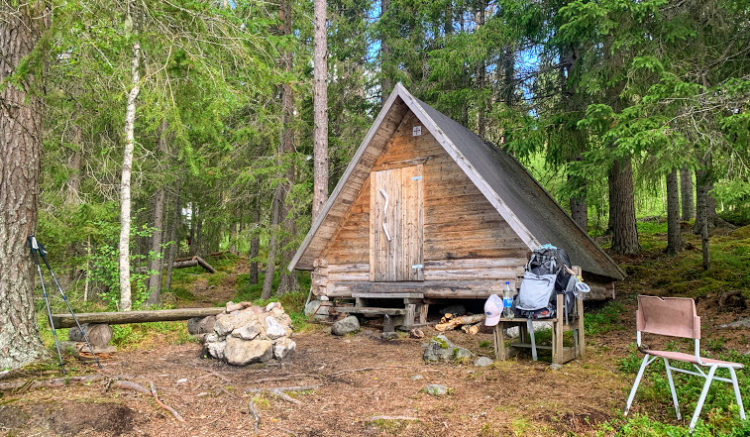





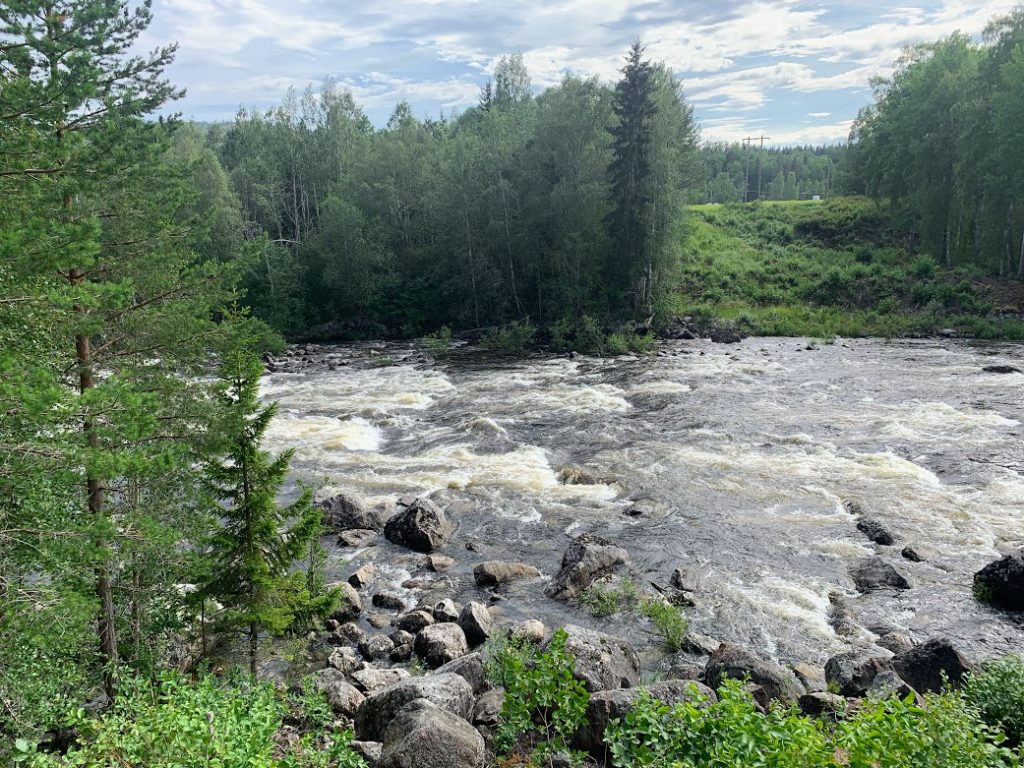

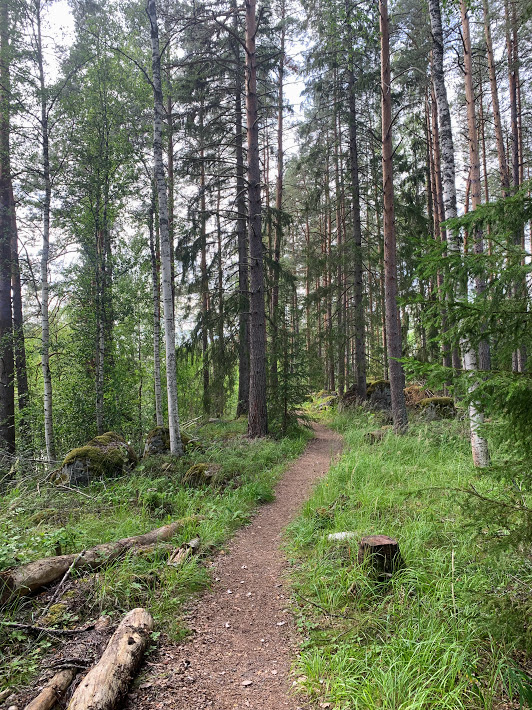



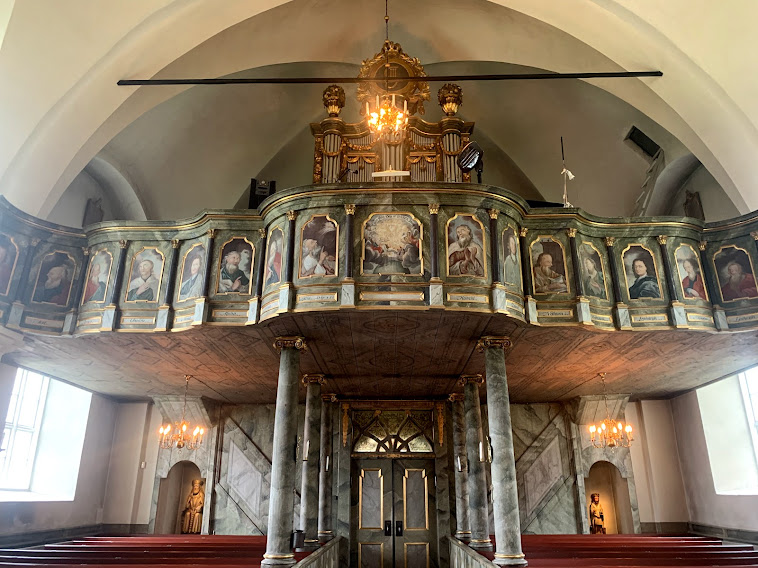
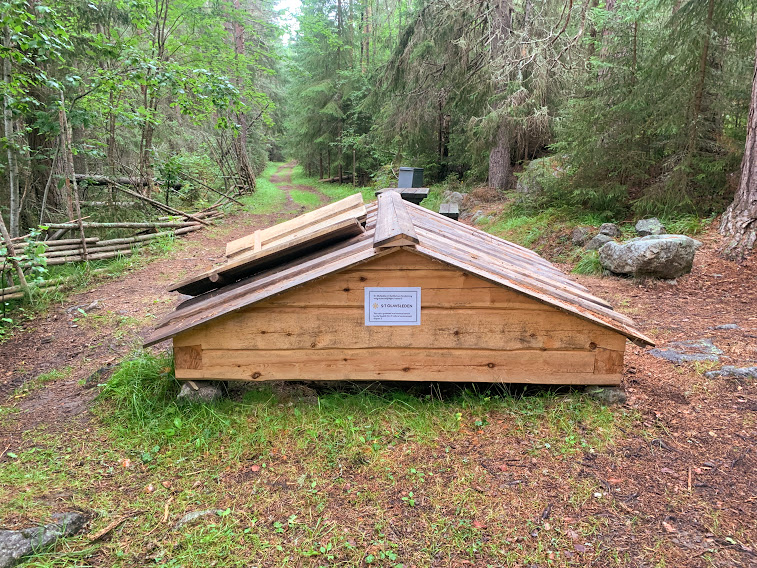


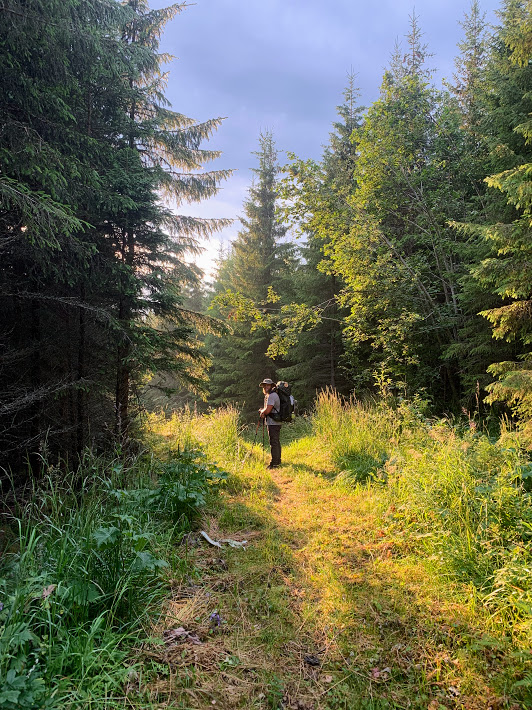

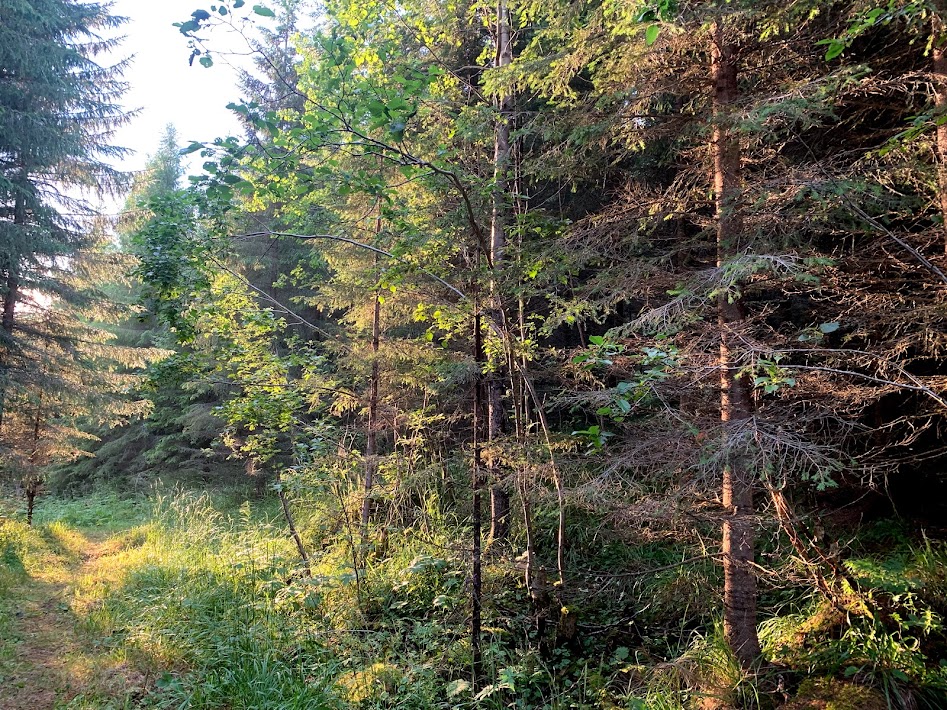



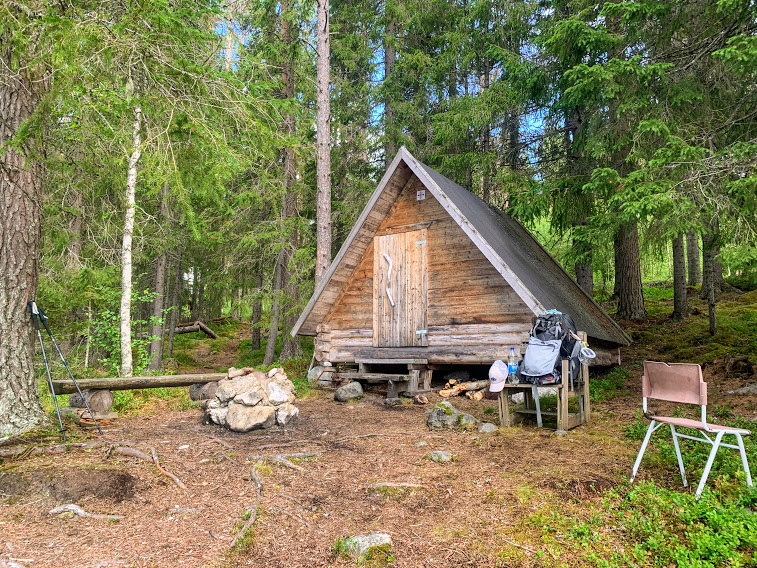

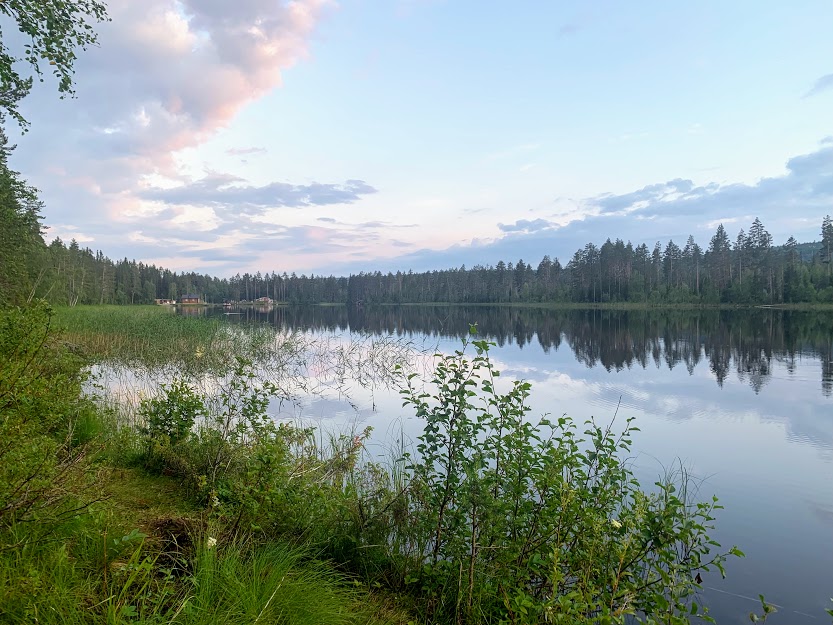

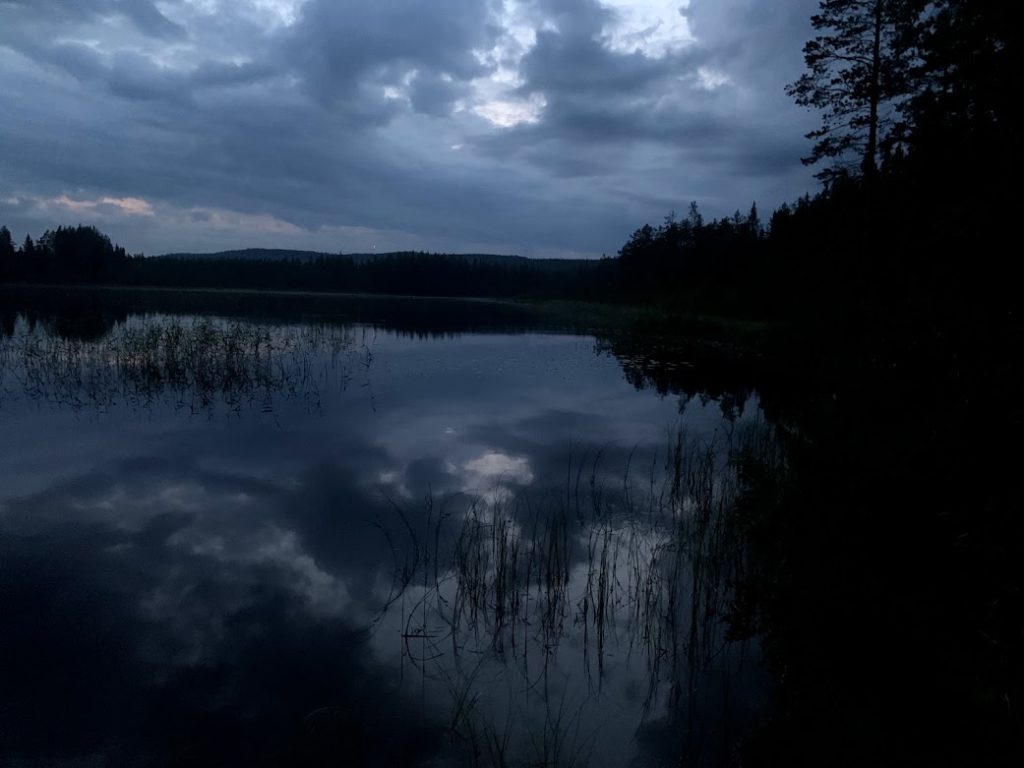
Nothing better than waking up to a new swanderers post in my im box!
Beautiful green country.
Love Wednesdays cause I get to travel with y’all again 😉❤️👣👣👣👣
You did it! Such a sense of accomplishment after a hard day! And the trail provides yet again!